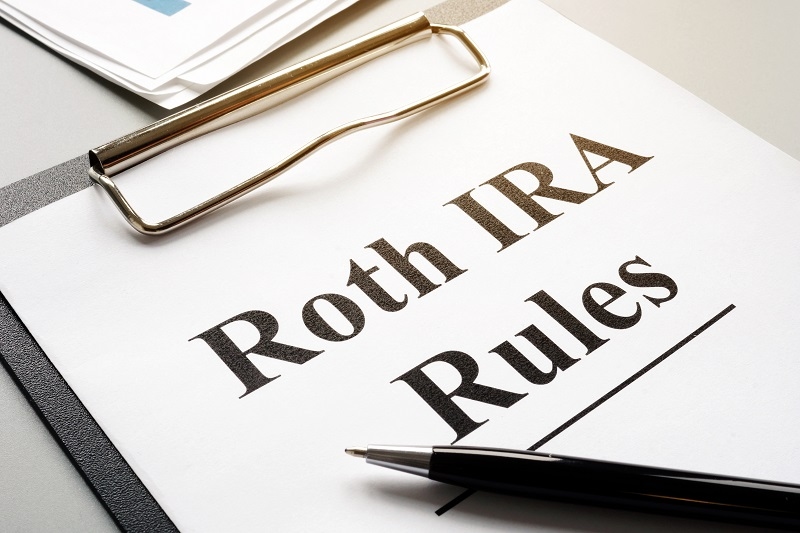
Dreaming approximately early retirement is thrilling, however, turning that dream into reality requires more than just diligent saving. You want an early retirement withdrawal method that’s no longer the simplest but also tax-clever. Taxes and penalties can eat away at your hard-earned earnings if you don't plan. A regular withdrawal plan is therefore important, mainly one based on tax-efficient retirement withdrawals and a knowledge of Roth IRA withdrawal regulations.
We'll stroll you through growing a reliable, adaptable, and tax-efficient early retirement withdrawal approach in this tutorial. We’ll moreover cover the manner to gather your withdrawals as it should be, live in favourable tax brackets, and keep away from penalties in early retirement. Let’s dig in!
Many early retirees awareness closely on collecting wealth; however, very few think about how they’ll withdraw that money without getting hammered by means of taxes. A tax-efficient retirement withdrawal plan helps you maintain more of what you’ve stored, and it performs an essential function in determining how long your money lasts.
Without a green method, you hazard triggering better tax brackets, untimely withdrawal penalties, and needless strain. Planning your early retirement withdrawal strategy with taxes in mind can help decrease federal and state tax liabilities, whilst providing you with the flexibility to experience existence on your terms.
Let’s start with the middle components of a smart early retirement withdrawal approach—information about your bills and the way they’re taxed.
Roth IRAs are the crown jewel for tax-efficient retirement withdrawals. Contributions to Roth IRAs are made with after-tax dollars, which means certified withdrawals are entirely tax-free.
Key Roth IRA withdrawal policies include:
This makes the Roth IRA a fantastic tool for those planning to retire early and still need get entry to to finances
Income is calculated as each dollar you take out of tax-deferred accounts, such as traditional IRAs or 401(okay)s. Large withdrawals may therefore cause you to move into higher tax brackets, increasing your tax liability. You can stretch withdrawals over time to live in lower brackets by using a strategic early retirement withdrawal approach.
Pro tip: Use your “gap years” (the years between retirement and Social Security or required minimum distributions) to convert funds from a conventional IRA to a Roth IRA, maintaining you in a low tax bracket and developing future tax-free profits.
The sequence of withdrawal approach is the order in which you tap your retirement accounts. Getting this proper is vital to growing a tax-green retirement withdrawal plan and stopping your financial savings from draining out too soon.
These bills develop tax-free and are your most valuable asset for past due retirement. This order can assist early retirees expand their existence in their savings and manage which tax brackets they fall into yearly.
Retiring earlier than age 59½ has its advantages; however, it also comes with challenges, specifically the danger of early withdrawal consequences. However, there are numerous approaches to get access to funds early without consequences.
As stated, Roth IRA withdrawal regulations let you withdraw contributions at any age, penalty-free. This makes Roth IRAs a valuable bridge account for early retirees.
A 72(t) plan lets you take early withdrawals from IRAs before age 59½ without consequences, provided you take the same amount for five years or till age 59½ (whichever is longer).
If you retire early at age 55 (or later) and leave your job, you could withdraw from a 401(okay) without penalty. However, this rule applies handiest to the 401(okay) associated with your last employer.
Having more than one early entry strategy to your early retirement withdrawal method enables you to keep away from depleting anybody account too soon and keeps your tax bill in check.

Here’s a way to align your early retirement withdrawal method with long-term tax financial savings:
Roth conversions are an incredible way to transfer cash from tax-deferred accounts to tax-free money owed. Do this when your earnings are low to minimise tax impact. This also reduces destiny Required Minimum Distributions (RMDs), which can bump you into higher tax brackets later in life
If you’re drawing from taxable accounts, don't forget capital profits harvesting. In a few instances, long-term capital gains are taxed at 0% in case your profits are low sufficient. This is some other perk of retiring early—you may manipulate your income stage more effortlessly.
Delaying Social Security may be a smart circulate. It permits you to apply your low-profits early retirement years to do Roth conversions or withdraw from taxable bills, while deferring higher guaranteed income for later years.
The basis of each sustainable early retirement withdrawal approach is flexibility. Your plan has to alternate because you have no concept of how markets, tax policies, or personal situations will change through the years. Here's the way you construct flexibility:
You can increase the financial stability of your early retirement years by avoiding these pitfalls:
Let’s walk through a simplified example:
Jane, age 50, desires to retire early at 55 with $1.2 million break-up:
Here’s her early retirement withdrawal approach:
By age 70, Jane has a reduced IRA stability, a large Roth account, and might claim better Social Security benefits. All this became feasible due to a smart, tax-green retirement withdrawal plan.
An effective early retirement withdrawal strategy is greater than only a numbers game—it’s approximately freedom, manipulation, and security. With a little planning, you may design a roadmap that minimises taxes, avoids consequences, and helps your way of life for many years. By learning Roth IRA withdrawal regulations, structuring the right collection of withdrawal strategy, and keeping a watch on your tax brackets, you’ll be nicely on your way to a smarter, more exciting retirement. It’s not just about how a great deal you shop—it’s approximately how wisely you spend.
So whether you intend to retire early in 5 years or fifteen, now's the perfect time to build your approach. Your future self will thank you.
This content was created by AI